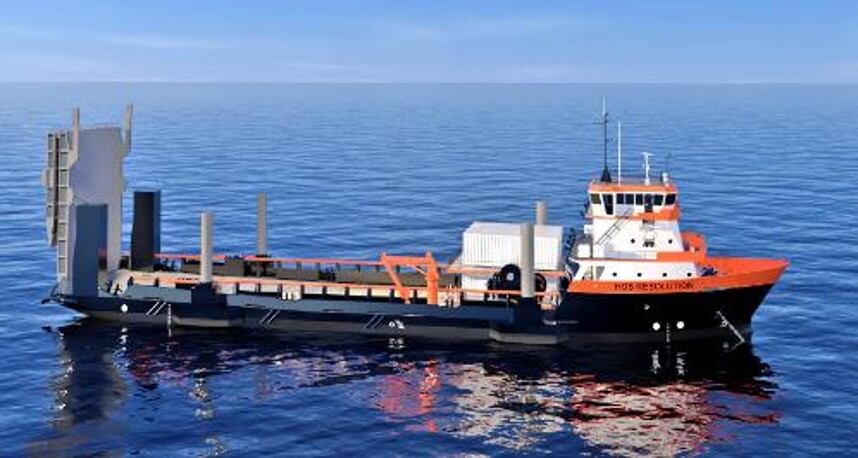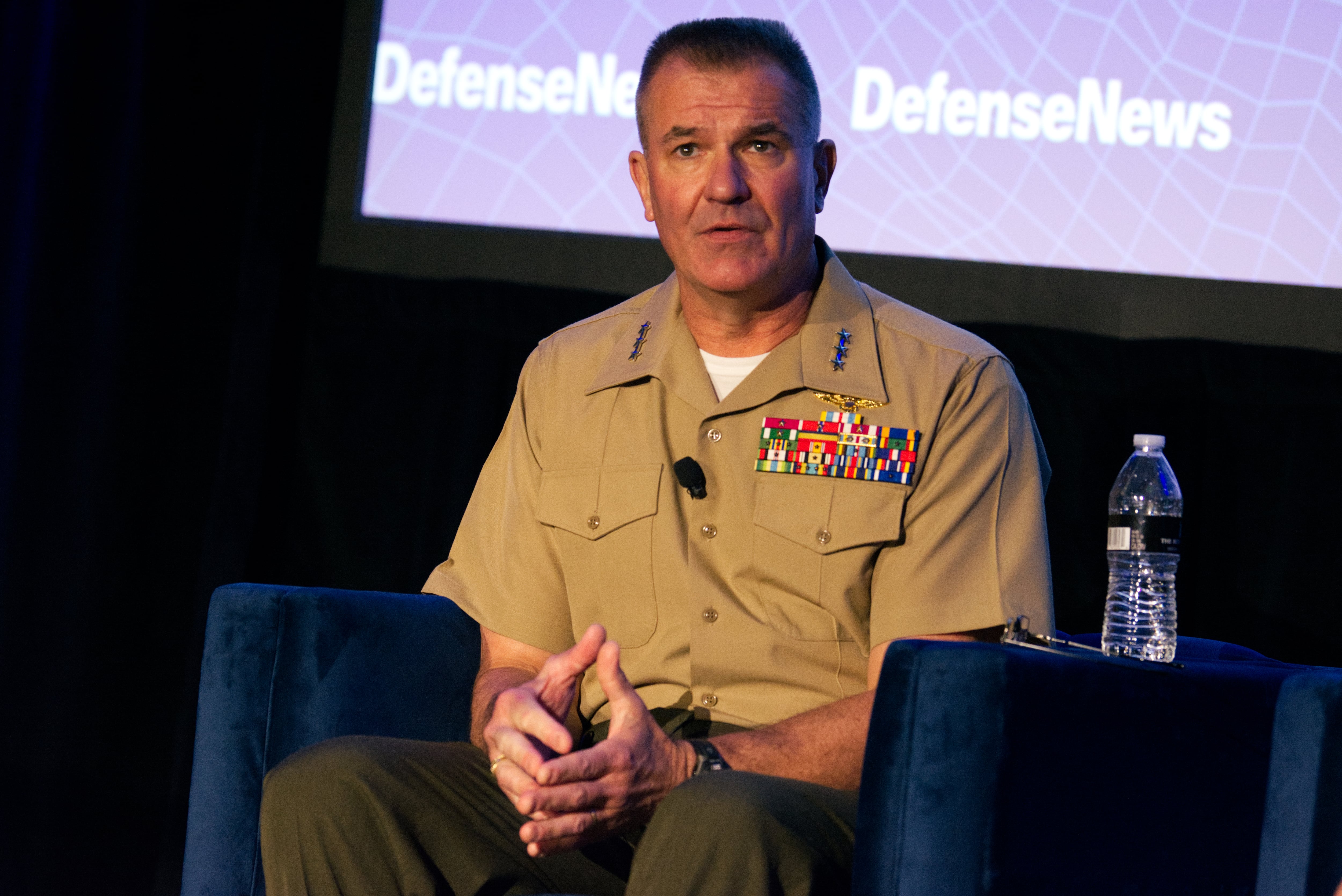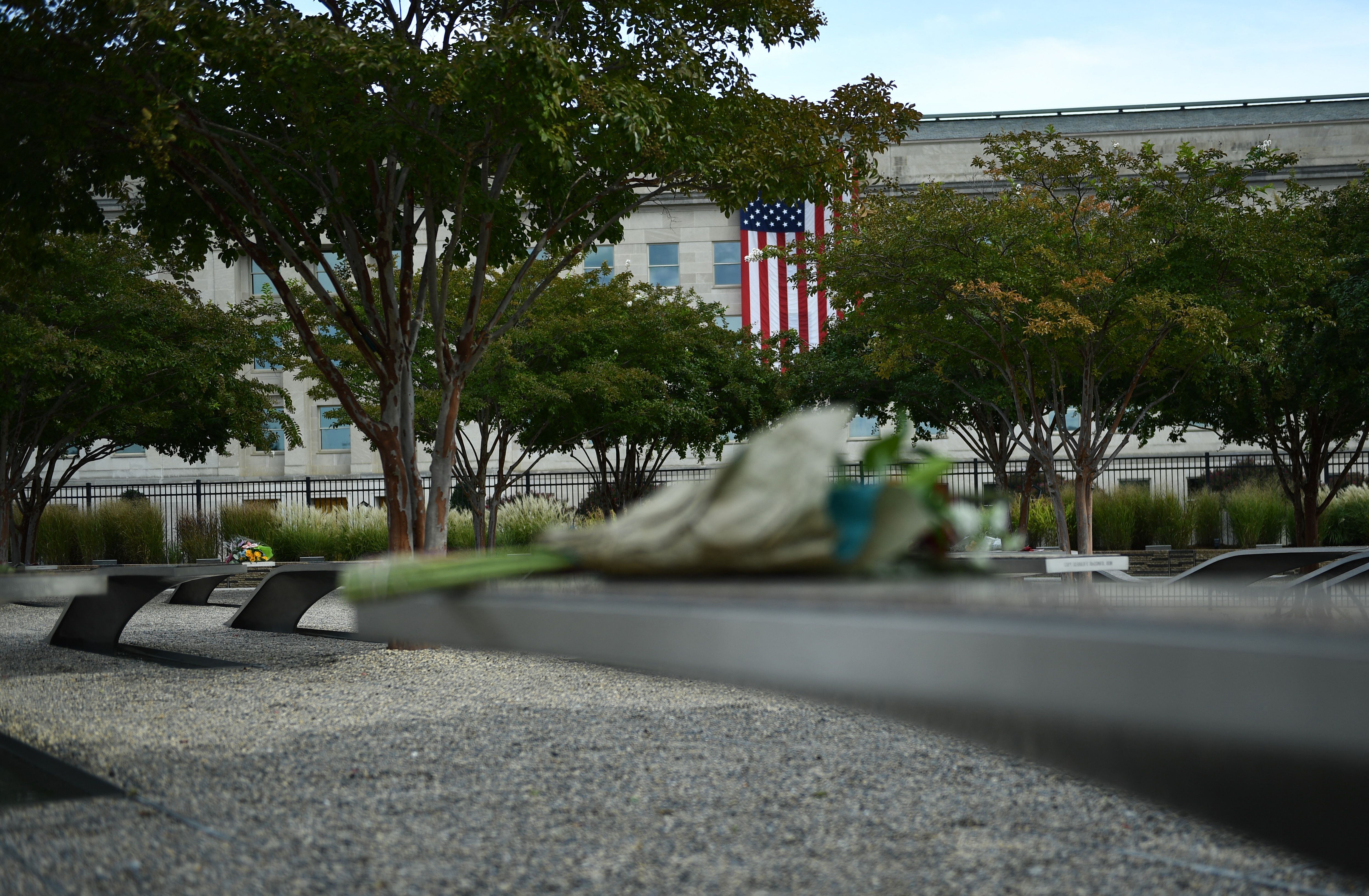ARLINGTON, Va. — The U.S. Marine Corps will test out its first stern landing vessel at an Army event this spring, a top general said Wednesday, as the service prepares to create a fleet of shore-to-shore connectors to support Marines operating in the Pacific.
The service announced its idea for this type of craft — smaller than a traditional amphibious ship, but larger than the ship-to-shore connectors it currently uses — in 2020 as part of its Force Design 2030 modernization effort. The program of record was delayed several times but is now planned to go on contract in fiscal 2025.
Even as the Corps works on requirements for this formal program, called the Landing Ship Medium, it’s also pursuing prototypes that can more quickly enter the fleet.
A first prototype — a leased offshore support vessel from Hornbeck Offshore Services — underwent modifications to turn it into a stern landing vessel, including the addition of a large ramp, landing legs, and protection for the propellers and rudders. This vessel has been undergoing Marine Corps tests and evaluations since March.
Lt. Gen. Karsten Heckl, the deputy commandant of the Marine Corps for combat development and integration, said Sept. 6 at the Defense News Conference that Marines will bring this vessel to the Army’s Project Convergence Capstone 4 event slated for spring 2024, and use it to support Marine expeditionary force operations.

The Corps said earlier this year it had money for two additional stern landing vessel prototypes but had not yet sought out potential vessels. Now, Heckl said at the conference, the second may be a purpose-built vessel with slightly different features than the modified Hornbeck ship, to allow for comparison of capabilities. The third may come from Australian company Sea Transport.
The general said Marines went through a foreign comparative testing process with the Australian company to determine if it could lease a vessel for experimentation. Heckl called Sea Transport an “Australian company that knows the Indo-Pacific really, really well, and knows how to operate in the Indo-Pacific really, really well.”
Following his on-stage remarks, he told reporters that “they gave an impressive pitch to me. I have a pretty good poker face, but it was like, ‘Wow, that’s good stuff.’ And again, it’s a company that lives in the Indo-Pacific; they know the area, they know the needs and requirements, they’ve built these before, so we’re excited.”
After working with all three prototypes, the Marine Corps intends to identify what design and capability works best, and pursue it as a bridging solution until the Landing Ship Medium is available. Notably, the Corps may be able to lease a handful of vessels faster than it can take delivery of the Landing Ship Medium platforms it buys. The bridging solution could also augment the eventual Landing Ship Medium fleet in the longer term.
Heckl said he’s “pretty confident” the Landing Ship Medium contract will be awarded in FY25 despite past delays.
“Things have slipped right, but I think for all the right reasons. We’re just simply trying to get the requirement right while still trying to move at pace. If you start moving too quickly, you might end up jumping to a conclusion that you probably should have taken a little more time to look at,” he said.
Five companies are building competitive prototypes, and the Marines will select one to fulfill the Landing Ship Medium program within the next two years.
“This is going to be primarily, 99% of the time, a deterrence tool. It’s going to be day-to-day competition, working with allies and partners, so we’re trying to find the most cost-effective way” to get Marines from shore to shore across a range of terrain in the Pacific.
The current concept for the Landing Ship Medium, previously called the Light Amphibious Warship, is mostly unchanged from its 2020 creation, though Heckl said recent debates over the vessel and its requirements are largely focused on its ability to operate inside China’s weapons engagement zone.
“I think we’ve really found some really good middle ground on survivability, recoverability — not going all the full way to being a full-blown warship, which, as you can imagine, adds up cost quite a bit,” Heckl said, referring to negotiations between his team and the Navy’s assistant secretary for research, development and acquisition.
“I think we’re in a really good place” for an FY25 contract award, he added.
Megan Eckstein is the naval warfare reporter at Defense News. She has covered military news since 2009, with a focus on U.S. Navy and Marine Corps operations, acquisition programs and budgets. She has reported from four geographic fleets and is happiest when she’s filing stories from a ship. Megan is a University of Maryland alumna.





